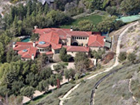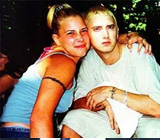
Ivy League
美国资讯网 | 2013-07-18 14:03

The Ivy League is an athletic conference comprising eight private institutions of higher education in the Northeastern United States. The conference name is also commonly used to refer to those eight schools as a group. The eight institutions are Brown University, Columbia University, Cornell University, Dartmouth College, Harvard University, Princeton University, the University of Pennsylvania, and Yale University. The term Ivy League also has connotations of academic excellence, selectivity in admissions, and social elitism.
The term became official after the formation of the NCAA Division I athletic conference in 1954. The use of the phrase is no longer limited to athletics, and now represents an educational philosophy inherent to the nation's oldest schools. Seven of the eight schools were founded during the United States colonial period; the exception is Cornell, which was founded in 1865. Ivy League institutions, therefore, account for seven of the nine Colonial Colleges chartered before the American Revolution.
Ivy League schools are viewed as some of the most prestigious, and are ranked amongst the best, universities in the United States, and worldwide. All eight Ivy League institutions place within the top sixteen of the U.S. News & World Report college and university rankings, including the top four schools and five of the top nine. A member of the Ivy League has been the U.S. News number-one-ranked university in each of the past twelve years: Princeton University five times, Harvard University twice, and the two schools tied for first five times.
The Ivies are all in the Northeast geographic region of the United States. Each school receives millions of dollars in research grants and other subsidies from federal and state government.
Undergraduate enrollments among the Ivy League schools range from about 4,000 to 14,000, making them larger than those of a typical private liberal arts college and smaller than a typical public state university. Overall enrollments range from approximately 6,100 in the case of Dartmouth to over 20,000 in the case of Columbia, Cornell, Harvard, and Penn. Ivy League university financial endowments range from Brown's $2.2 billion to Harvard's $32 billion, the largest financial endowment of any academic institution in the world
Members

History
Origin of the name
Students have long revered the ivied walls of older colleges. "Planting the ivy" was a customary class day ceremony at many colleges in the late 1800s. In 1893 an alumnus told the Harvard Crimson, "In 1850, class day was placed upon the University Calendar.... the custom of planting the ivy, while the ivy oration was delivered, arose about this time." Ivy planting ceremonies are reported for Yale, Simmons, Bryn Mawr and many others. Princeton's "Ivy Club" was founded in 1879.
The first usage of Ivy in reference to a group of colleges is from sportswriter Stanley Woodward (1895–1965).
A proportion of our eastern ivy colleges are meeting little fellows another Saturday before plunging into the strife and the turmoil.
—Stanley Woodward, New York Tribune, October 14, 1933, describing the football season
According to the book Dictionary of Word and Phrase Origins (1988), author William Morris writes that Stanley Woodward actually took the term from fellow New York Tribune sportswriter Caswell Adams. Morris writes that during the 1930s, the Fordham University football team was running roughshod over all its opponents. One day in the sports room at the Tribune, the merits of Fordham's football team were being compared to those of Princeton and Columbia. Adams remarked disparagingly of the latter two, saying they were "only Ivy League." Woodward, the sports editor of the Tribune, picked up the term and printed the next day.
Note though that in the above quote Woodward used the term ivy college, not ivy league as Adams is said to have used, so there is a discrepancy in this theory, although it seems certain the term ivy college and shortly later Ivy League acquired its name from the sports world.
The first known instance of the term Ivy League being used appeared in The Christian Science Monitor on February 7, 1935. Several sportswriters and other journalists used the term shortly later to refer to the older colleges, those along the northeastern seaboard of the United States, chiefly the nine institutions with origins dating from the colonial era, together with the United States Military Academy (West Point), the United States Naval Academy, and a few others. These schools were known for their long-standing traditions in intercollegiate athletics, often being the first schools to participate in such activities. However, at this time, none of these institutions would make efforts to form an athletic league.
The Ivy League universities are also called the "Ancient Eight" or simply the Ivies.
A common folk etymology attributes the name to the Roman numerals for four (IV), asserting that there was such a sports league originally with four members. The Morris Dictionary of Word and Phrase Origins helped to perpetuate this belief. The supposed "IV League" was formed over a century ago and consisted of Harvard, Yale, Princeton, and a 4th school that varies depending on who is telling the story. However, it is clear that Harvard, Princeton, Yale and Columbia met on November 23, 1876 at the so-called Massasoit Convention to decide on uniform rules for the emerging game of football, which rapidly spread.
In addition, representatives from four schools: Rutgers, Princeton, Yale, and Columbia, met at the Fifth Avenue Hotel in Manhattan on October 19, 1873, to establish a set of rules governing their intercollegiate athletic competition, and particularly to codify the new game of college football (which at the time, largely resembled what is currently called rugby). Though invited, Harvard chose not to attend. While no formal organization or conference was established, the results of this meeting governed athletic events between these schools well into the 20th century
Other Ivies
Marketing groups, journalists, and some educators sometimes promote other colleges as "Ivies," as in Little Ivies (colloquialism referring to a group of small, selective American liberal arts colleges), Public Ivies or Southern Ivies. These uses of Ivy are intended to promote the other schools by comparing them to the Ivy League. For example, in the 2007 edition of Newsweek's How to Get Into College Now, the editors designated twenty-five schools as "New Ivies."
The term "Ivy Plus" is sometimes used to refer to the Ancient Eight plus several other schools for purposes of alumni associations, university affiliations, or endowment comparisons. In his book Untangling the Ivy League, Zawel writes, "The inclusion of non-Ivy League schools under this term is commonplace for some schools and extremely rare for others. Among these other schools, Massachusetts Institute of Technology and Stanford University are almost always included. The University of Chicago and Duke University are often included as well."
Share this page



















